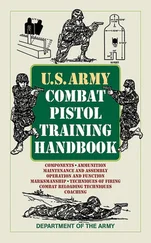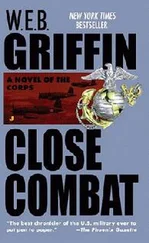Sergei Dudayev bypassed all manual overrides of the airrevitalization system and emergency hatch releases of the U.S. Laboratory Module. A few more strokes of the keys and he heard the alarms going off across the station as the computer system automatically isolated the laboratory from the rest of the station by closing and locking the hatches at both ends of the module.
His eyes drifted back to the flat-panel monitor, which now showed two astronauts frantically waving at the camera and reaching for the radio. Sergei turned the intercom system off. He didn’t care to hear their pleas, just as the world had refused to listen to the cry of his people as Russian forces raped his beloved Chechnya.
Visions of his explosive youth, of his slaughtered friends, of his hasty departure filled his mind as Sergei typed again. This time he overrode the air pressurization and revitalization control system of the station and began to bleed the air still trapped inside the Laboratory Module into space. The astronauts continued to wave and scream in front of the camera, but their struggle didn’t last long. Soon they began to breathe through their mouths. Their movements grew clumsier, erratic, until they went limp.
The Russian quietly followed the bodies floating in the monitor. His soul could hear their screams now, their shouts and pleas for mercy. All four astronauts had died without really knowing Sergei’s motive, without an explanation as to why their lives had to end so abruptly inside this man-made pocket of life traveling at thousands of miles per hour over a fragile Earth.
The two keys giving him access to all modules of the station, including GPATS, Sergei quickly typed the appropriate commands on the MPAC workstation, unlocking the latching mechanism that isolated GPATS from the rest of the station. Locking the MPAC system by removing both keys, Sergei used a single arm motion to propel his weightless body across the length of the Habitation Module, where a hatch connected that end of the module to Node One, also known as Unity, a pressurized cylinder fifteen feet in diameter and eighteen feet long sporting six hatches that served as docking ports for the other modules. A hatch connected to the U.S. Laboratory Module, another to the GPATS Module, and a third to the airlock, where the crew could suit up prior to EVAs, extravehicular activities, or space walks. The hatch immediately above Sergei led to a Russian-made Soyuz capsule to be used by the crew of the station to return to Earth in an emergency. Sergei planned to use the Soyuz Escape System (SES) to return to Earth after he had completed his mission.
A fifth hatch attached a cupola to Unity. Composed of eight large windows arranged in a circle over the node, the cupola provided the crew of the ISS with a 360-degree field of view in azimuth and complete hemispheric field of view in elevation of Earth. Part of the instrumentation aboard the cupola was the control system for the ISS robot arm, a larger and more versatile version of the venerable robot arm of the space-shuttle program. Unity’s sixth hatch was used to dock with visiting shuttles or Russian Progress supply ships. The other end of the U.S. Laboratory Module connected to Node Two, which led to additional modules on that side of the station, including the Columbus research module from Europe, and the Japanese experimental module.
Using the handholds built in along the padded walls lining Unity, Sergei directed himself into the GPATS Module. Placing his feet into the secure straps in front of the latched hatch, he applied nine pounds of pressure on the hatch actuator lock lever, turning it 180 degrees. The hatch opened to the contour of Unity’s inner wall. Sergei pulled it toward him about six inches, before pivoting it up and to the right side, exposing the crowded interior of the GPATS module.
Unlike the other modules, illuminated with soft white overheads, the interior of GPATS had a green glow designed to minimize eye fatigue during prolonged combat situations. Viewed from the inside, the module looked like a half cylinder. The side facing Earth was completely taken up by the BLU-85s, each stored in its own individual compartment and stacked ceiling high for the entire length of the module, leaving a three-foot-wide “walkway” between the wall of shelled warheads and the left side of the compartment. The forward section of the side of GPATS opposite the warheads consisted of two large computer consoles, each capable of launching warheads if the order ever came from the United Nations Security Council. The workstation closest to the hatch had a red light above it, meaning it was the system currently designated as active. The other system, set in standby mode, served as backup.
Farther down the left side Sergei saw the single computer system controlling the powerful GPATS laser, gimbal-mounted above the module. Gliding past gleaming instrumentation and displays, the Russian cosmonaut reached the laser system, whose operation he had had to learn before being qualified as mission specialist. ISS regulations dictated that every crew member aboard the ISS knew the operation of the laser in case of an emergency. The operation of the warheads, however, was limited to UNSC personnel, mostly American. In the event that a mission specialist like Sergei figured out how to operate the warhead-launching system, he would be incapable of doing so without the authorization codes, which were kept in a safe next to the workstation. Sergei had picked up bits and pieces of the launching procedure during a recent drill by eavesdropping on an intercom channel. If the order to launch ever came, the authorized crew would use their keys simultaneously to open the safe and extract the sealed envelopes containing the launch codes, which would then be compared with those received from Earth. If the codes matched, the order to launch one or more warheads would be executed. Such precautions were required given the fact that albeit nonnuclear, each warhead was capable of leveling downtown Washington, D.C. However, no authorization from the Pentagon or the United Nations was required to use the laser, particularly if there was a need to deflect or vaporize space junk in a collision course with the station. Its use in an emergency was at the sole discretion of the station commander.
Sitting behind the controls of the GPATS laser, Sergei activated the search-and-tracking radar, which, in conjunction with the tracking systems of three reflectors positioned in geosynchronous orbit 23,000 miles above the Earth, had the capability of detecting and tracking anything in orbit.
Sergei went to work, commanding the laser’s search-and-tracking system to scan the space along an east-to-west elliptical orbit of 274 kilometers in perigee and 150 kilometers in apogee with an inclination of 63.4 degrees — the orbit of Russia’s latest Cosmos surveillance satellite, currently Russia’s eyes over the border between Chechnya and Dagestan to the north. Sergei adjusted the system’s sensitivity to filter out objects smaller than ten feet in length. It took an additional minute before the search-and-tracking system came back with an object roughly the size of a school bus.
Sergei Viktor Dudayev smiled.
I see you.
His fingers moved almost automatically, selecting an energy setting, width of beam, and duration of event. Giving the controls one last inspection, he commanded the laser to fire.
The hydrogen-fluoride chemical laser gun, receiving its power from massive solar-rechargeable batteries, created a high-energy beam of light, which streaked across space to one of three reflective mirrors in geosynchronous orbit. The fifty-foot-diameter segmented mirror, actively cooled by a steady flow of liquid hydrogen running below its reflective surface, and whose angle had already been determined by its radio link with GPATS, deflected the beam with only a four percent loss in energy. The beam continued on its new trajectory, which abruptly ended when it came in contact with the laminated twenty-four-karat gold skin of the Cosmos orbital reconnaissance satellite.
Читать дальше












